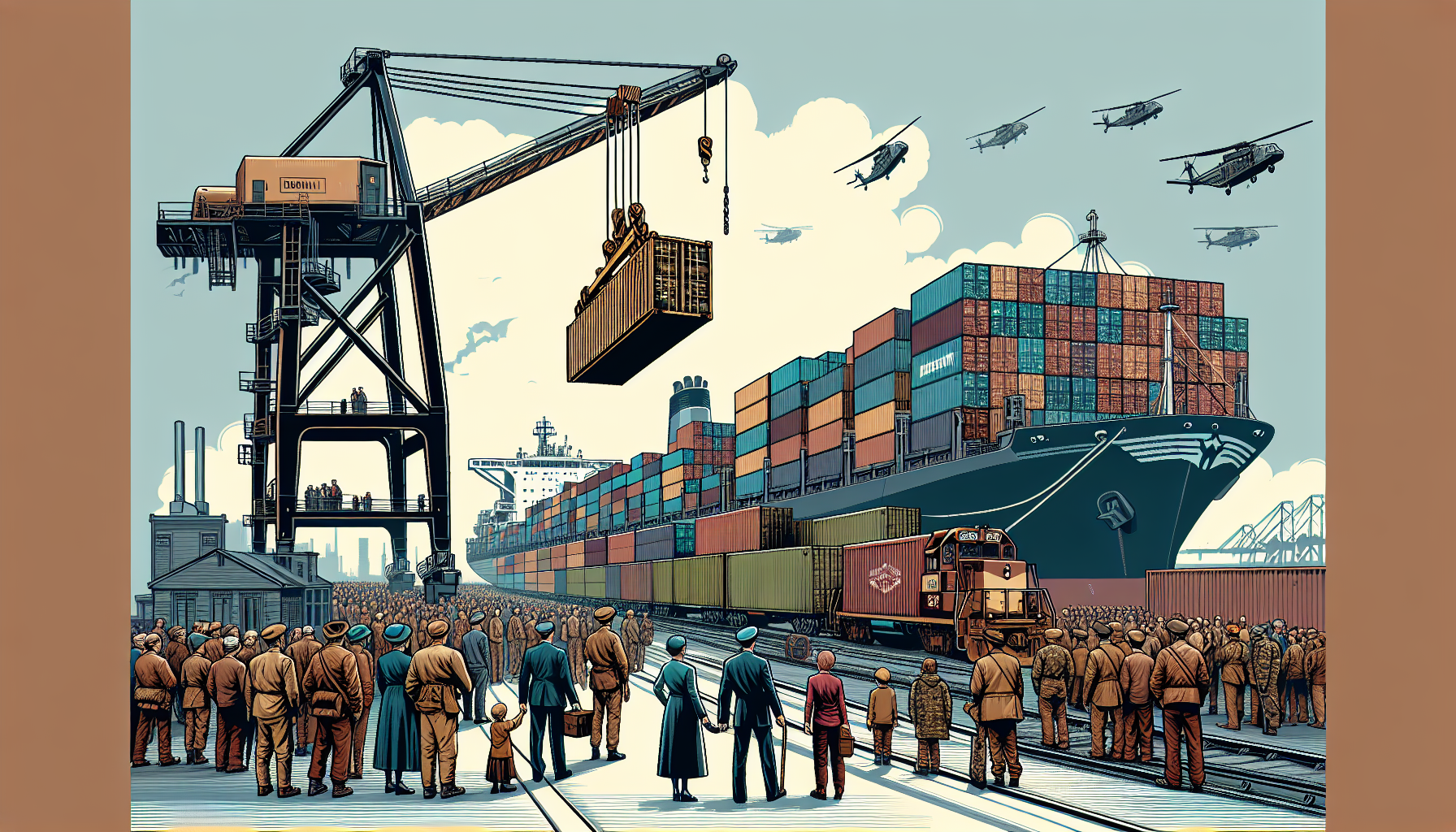Definition
In military operations, cross-loading refers to the practice of distributing personnel, weapons, or equipment across multiple vehicles, aircraft, or vessels to ensure mission success in case one is damaged or destroyed. This reduces dependency on a single mode of transportation and enhances the operational resilience. It is a common procedure in military logistics to guard against potential losses during conflict situations.
Key Takeaways
- Cross-loading in military operations refers to a strategy of distributing crucial resources among multiple vehicles, aircrafts, ships, or squads. This ensures that, should one unit be compromised, not all resources are lost.
- It enhances operational flexibility and survivability by reducing dependency on a single asset. It provides the opportunity to adapt to dynamic situations and enables continuous operation, even under adverse circumstances.
- While cross-loading can improve resilience, it also requires extensive planning and coordination. Proper allocation and tracking of resources are essential, and the added complexity can create logistic challenges.
Importance
Cross-loading is a critical term in military operations, referring to the practice of distributing soldiers’ essential gear, supplies, or personnel across multiple vehicles or aircraft to enhance operational resilience.
Its importance lies in its role in risk management and ensuring operational continuity.
In case of a vehicle or craft being incapacitated, the loss gets mitigated since no single unit carries all the crucial personnel or equipment.
It ensures that mission-critical resources are not all lost at once, thus enhancing the survivability of troops and chances of mission success.
Consequently, cross-loading significantly contributes to the tactics and strategies of military logistics, making it an indispensable element in military planning.
Explanation
Cross-loading serves a critical purpose in military operations to enhance combat effectiveness and survive-ability. Primarily, it is used as a strategy to distribute essential resources amongst different units or vehicles to ensure continuity of operations in case a unit is incapacitated.
This technique counters the potential risk of a single point of failure. For instance, if one vehicle carrying all the ammunition or medical supplies is destroyed or incapacitated, it would not completely halt the mission because the necessary resources are dispersed amongst multiple units.
Moreover, cross-loading is also used to balance the combat power across the entire fighting force. By allocating resources and soldiers across multiple units, each unit is enabled to operate independently if required.
For instance, if a force is separated during intense battle circumstances, units can continue their mission objectives with the available resources. Hence, cross-loading, while requiring careful planning, plays a crucial role in mission success and survival in the face of adversity.
Examples of Cross-loading
Operation Overlord (D-Day, 1944): This is one of the most significant examples of cross-loading in military history. For the logistics of the invasion of Normandy, soldiers, vehicles, and supplies were cross-loaded onto different landing ships to ensure that even if one landing craft was destroyed or delayed, the remaining ones would still have a sufficient combination of resources to continue with the mission.
Afghanistan War (2001-present): The U.S. and allied forces during different operations often cross-loaded supplies onto various transport vehicles for deployment in Afghanistan. Not only did this strategy serve as a risk mitigation tactic, allowing continued operation even with loss of some vehicles, but it also enabled forces to distribute equipment and soldiers more effectively throughout the rugged terrain.
Iraq War (2003-2011): During the operation, forces often cross-loaded equipment between aircrafts, trucks, and naval ships to not only distribute risk but also to maximize efficiency and use each transportation means to its highest capacity. By strategically spreading assets across several transport units, allied forces could effectively respond to changing circumstances or potential threats during the mission.
FAQs on Cross-Loading in Military Operations
What is Cross-Loading in Military Operations?
In military operations, cross-loading refers to the process of distributing personnel, weapons, and equipment among available vehicles, aircrafts or vessels. This is to ensure continued capability even when part of the team or equipment is lost or incapacitated.
Why is cross-loading important in military operations?
Cross-loading plays a crucial role in military operations because it helps to ensure that the loss of a single vehicle, aircraft, or vessel does not drastically compromise the mission. The strength of the unit is dispersed so that every smaller unit can function independently if needed.
What are the benefits of cross-loading in military warfare?
Cross-loading increases operational effectiveness by maximizing flexibility and resilience. Key members of a team and crucial items are spread out among multiple vessels or vehicles to mitigate risks. It augments survivability, minimizes the impact of losses and keeps the mission going under complex circumstances.
Does cross-loading have any disadvantages?
While cross-loading ensures a certain level of redundancy, it can be more complex in terms of logistics. It demands meticulous planning and coordination. There’s a potential for decreased efficiency if it’s not executed well due to increased communication hurdles and misallocation of resources.
Related Military Operation Terms
Sure, here is a list of related terms in HTML format for bulletpoint representation:
“`
- Deployment Optimization
- Supply Chain Management
- Load Balancing
- Logistics Planning
- Military Equipment Transportation
“`
Please note that cross-loading in the context of VA benefits isn’t well-defined or commonly used. Hence, the terms suggested above are related to the general concept of cross-loading in logistics and supply chain management. It will be useful if you could provide any specific context or definition for the term ‘Cross-loading’ in regard to VA benefits.
Sources for More Information
Sure, here are some reliable sources where you can learn more about the military operations term “Cross-loading”:
- U.S. Army: The U.S Army’s official website. It provides a wealth of information about various military terms and operations, including cross-loading.
- U.S. Marine Corps: The official homepage of the U.S. Marine Corps. They provide resources, news, and military terminologies as well.
- Joint Chiefs of Staff: The Joint Chiefs of Staff’s site offers comprehensive resources. They oversee all branches of the U.S. military, making them a good resource for cross-loading information.
- U.S. Department of Defense: The Department of Defense’s official website. It often has detailed information on their various operations and military terms.
 Benefits.com Advisors
Benefits.com Advisors
With expertise spanning local, state, and federal benefit programs, our team is dedicated to guiding individuals towards the perfect program tailored to their unique circumstances.
Rise to the top with Peak Benefits!
Join our Peak Benefits Newsletter for the latest news, resources, and offers on all things government benefits.




















